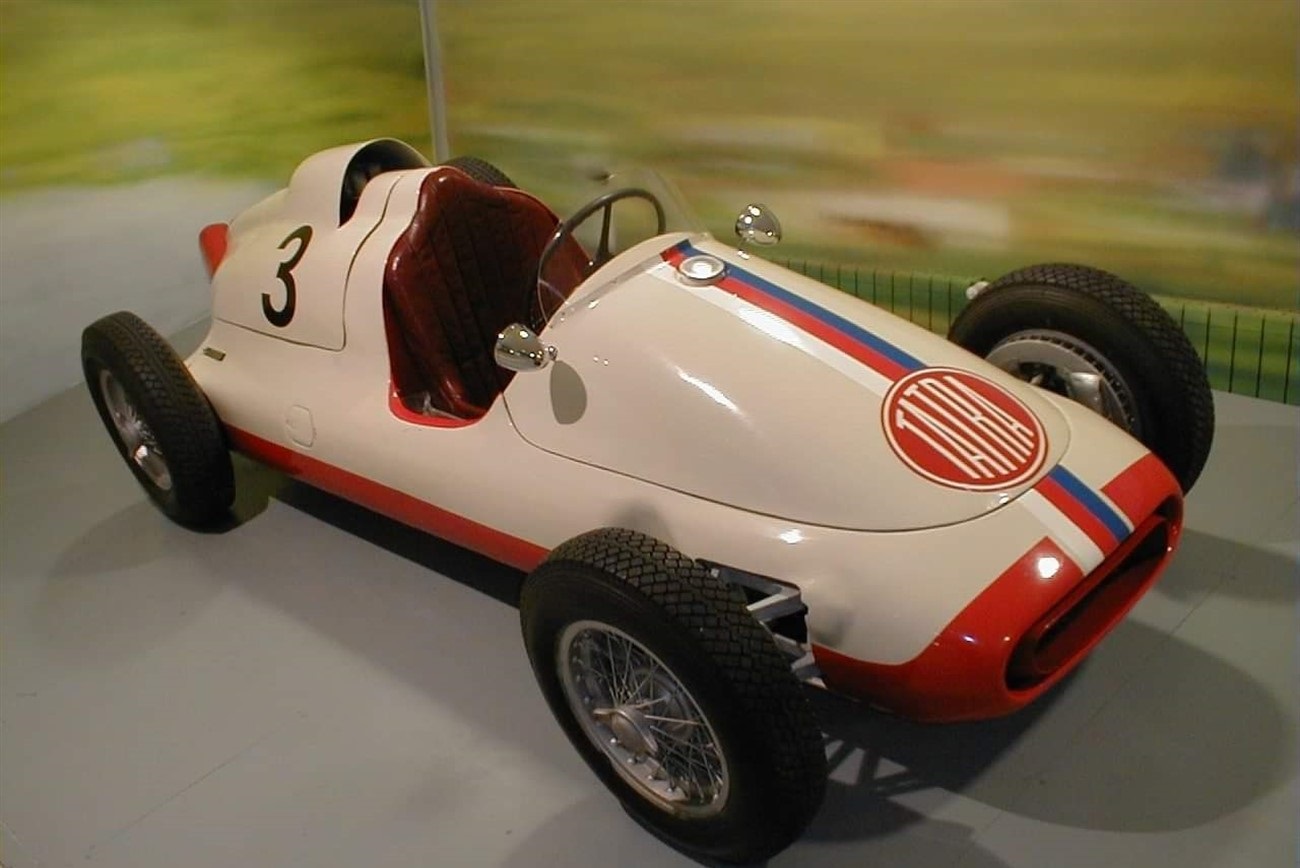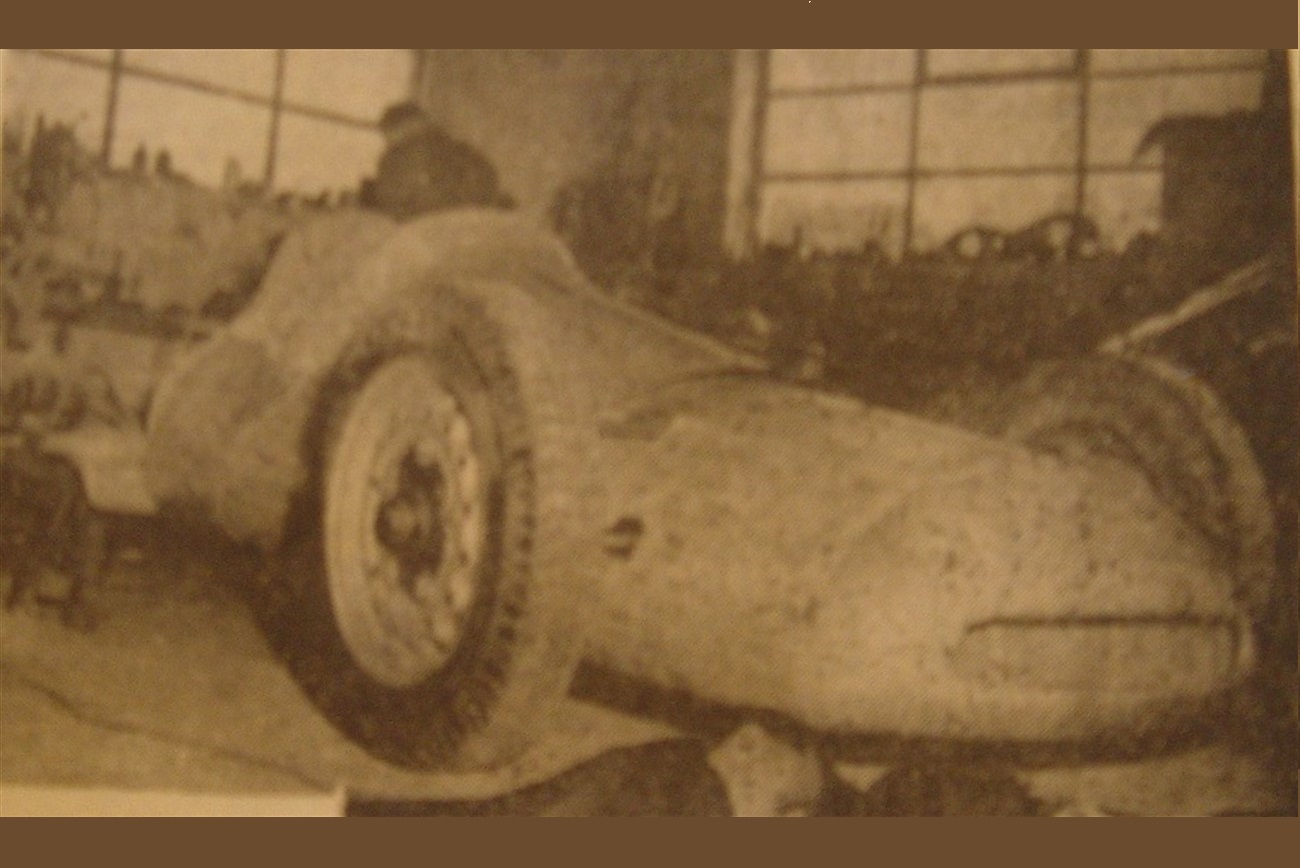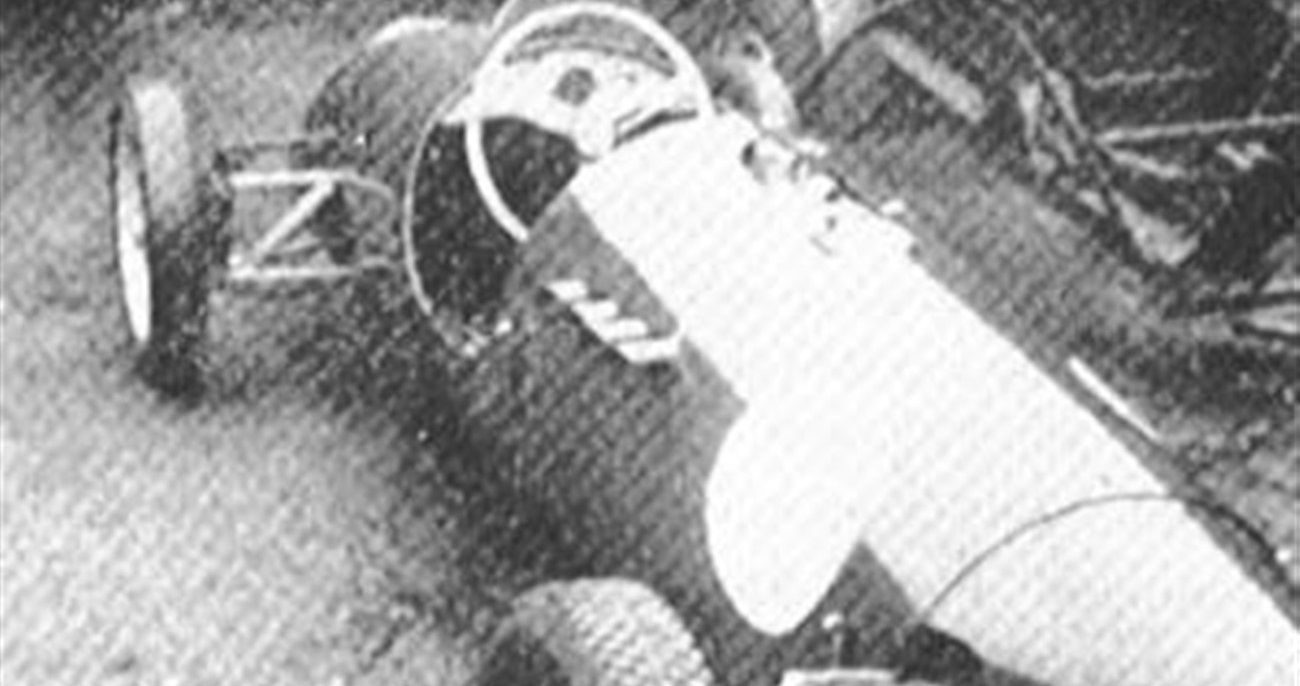Probably you have heard of the Tatra Company. known for it’s trucks and of course their participation in the Dakar. Recently i already published the story of the VM Monoplace, which was based on the Tatra T607. Thanks to Aleš Norský the story of the T607 can be told.
Tatra’s predecessor Nesselsdorfer Wagenbau (the name Tatra was adopted in 1919) built its first racing car in 1900 and the company continued to be involved in auto racing throughout the following decades. However, for the next 50 years, all their racing cars were derived from existing production models. This included the T602 Tatraplán Sport built for the 1949 Czechoslovak Grand Prix, which was based on the T600 passenger car (popularly known as Tatraplán) that itself was a continuation of the pre-WWII concept of T77 and T87 models designed by the legendary engineer Hans Ledwinka. In the race featuring among others the likes of Giuseppe Farina, Birabongse Bira, Emmanuel de Graffenried, Louis Chiron, Maurice Trintignant and the eventual winner Peter Whitehead, the car driven by veteran racing driver Bruno Sojka finished two laps down in 9th place. Nonetheless, it was probably the first time ever that an air-cooled car had finished and been classified in an officially sanctioned Grand Prix event.
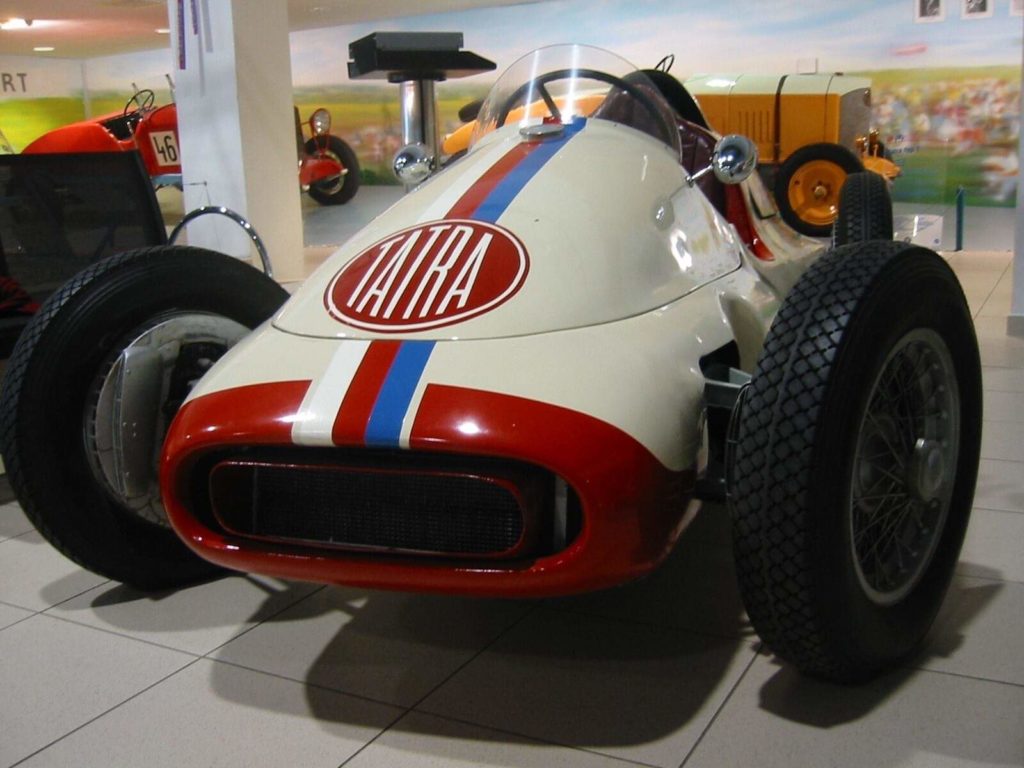
©Tatra Technical Museum 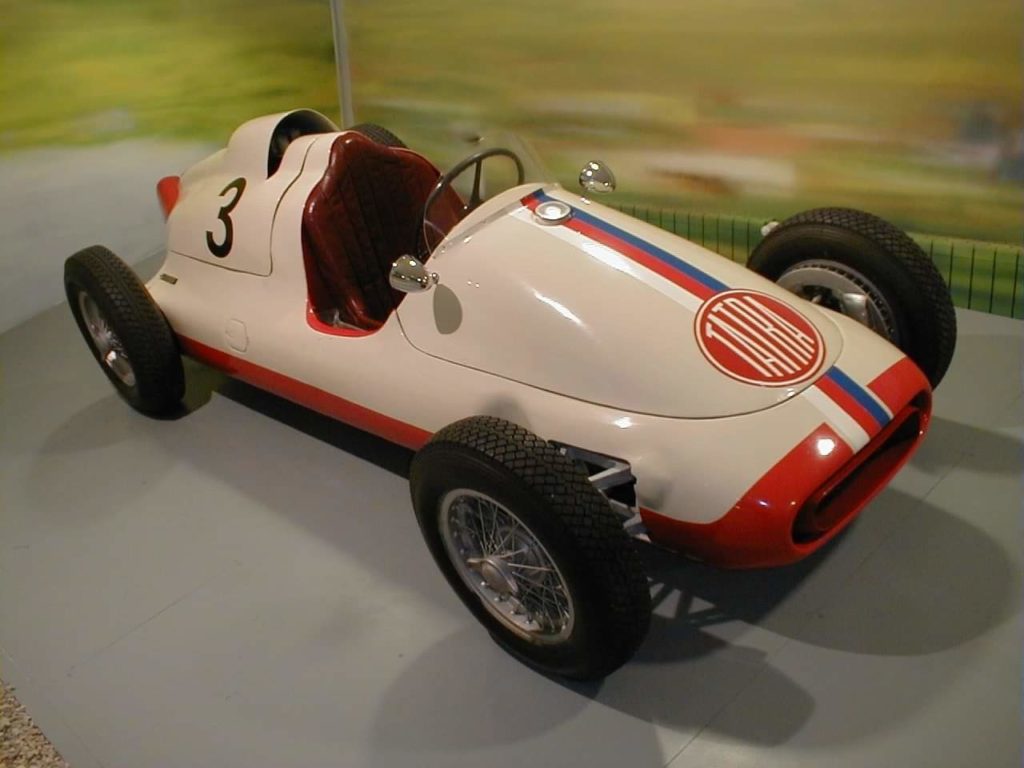
©Tatra Technical Museum
The 1985 ccm V8 air-cooled engine (just marginally bigger than T602 unit) was positioned behind the driver and the Monopost was capable of top speed at around 190 km/h. In its first race, the 1950 Czechoslovak Grand Prix, Sojka finished second behind Václav Hovorka on Maserati, but only few weeks later Sojka won on the new circuit in Šternberk that replaced the popular Ecce Homo hillclimb, and another car was produced with larger engine at 2350 ccm. Sadly, the very next year Sojka would be killed during practice for the same race (behind the wheel of T602) resulting in Tatra’s withdrawal. At the same time, due to the emerging Cold War and raise of the Iron Curtain, Tatra was unable to compete on a truly international stage and its only occasional foreign competition would be the East-German EMW cars built at the original BMW factory in Eisenach, which was nationalized by GDR.
After Sojka’s death, drivers Jaroslav Pavelka, Adolf Veřmiřovský, Josef Chovanec, Alois Mark, and Metoděj Přikryl dominated the regional races in Czechoslovakia, and particularly the Ecce Homo, which Pavelka won in 1952 through 1954, while Veřmiřovský triumphed in 1957 and 1958…there were no races in 1955 or 1956. In 1953 an upgraded version T607-2 was introduced and the engine capacity rose to 2545 ccm. In October Veřmiřovský used this car to set Czechoslovak seed record at 207.972 km/h. Internationally, Pavelka won the last two Czechoslovak Grands Prix of classic era in 1952 and 1954 (that year after a race-long battle with EMW’s of Arthur Rosenhammer and Edgar Barth) and has also finished fourth in the 1953 Sachsenring-Rennen behind Barth (EMW BMW), Rudolf Krause (Greifzu-BMW) and Hans Stuck (AFM Kuchen). This race was probably an only event that T607-2 contested outside of Czechoslovakia.
For 1954 the engine capacity was adjusted to 2472 ccm, which led some to believe that Tatra might after all be planning to enter the Formula 1 World Championship, newly opened to 2.50 liter cars. Obviously, the T607-2 Monopost would not trouble the Mercedes-Benz Silver Arrows very much, but it was somewhat comparable to the Gordini cars that have achieved a handful of top five finishes during the season. Due to the fact that Tatra’s engine was in constant mode of development, there would likely be a noticeable horsepower deficit, but a lucky Championship point would certainly not be out of question. Nonetheless, according to Tatra historian Karel Rosenkranz, no official documentation indicating an intention to enter any World Championship races exists in Tatra’s archives. So it seems that the prospect of Tatra cars racing in Formula 1 was never anything more than pure speculation.
The T603 limousine went into full production in 1957, and the need for further development of T607-2 had therefore diminished. Consequently, Tatra has scrapped the single-seater racing programme after the 1958 season, sending the Monopost fleet to its Technical Museum in Kopřivnice, where one of them still could be seen today.

